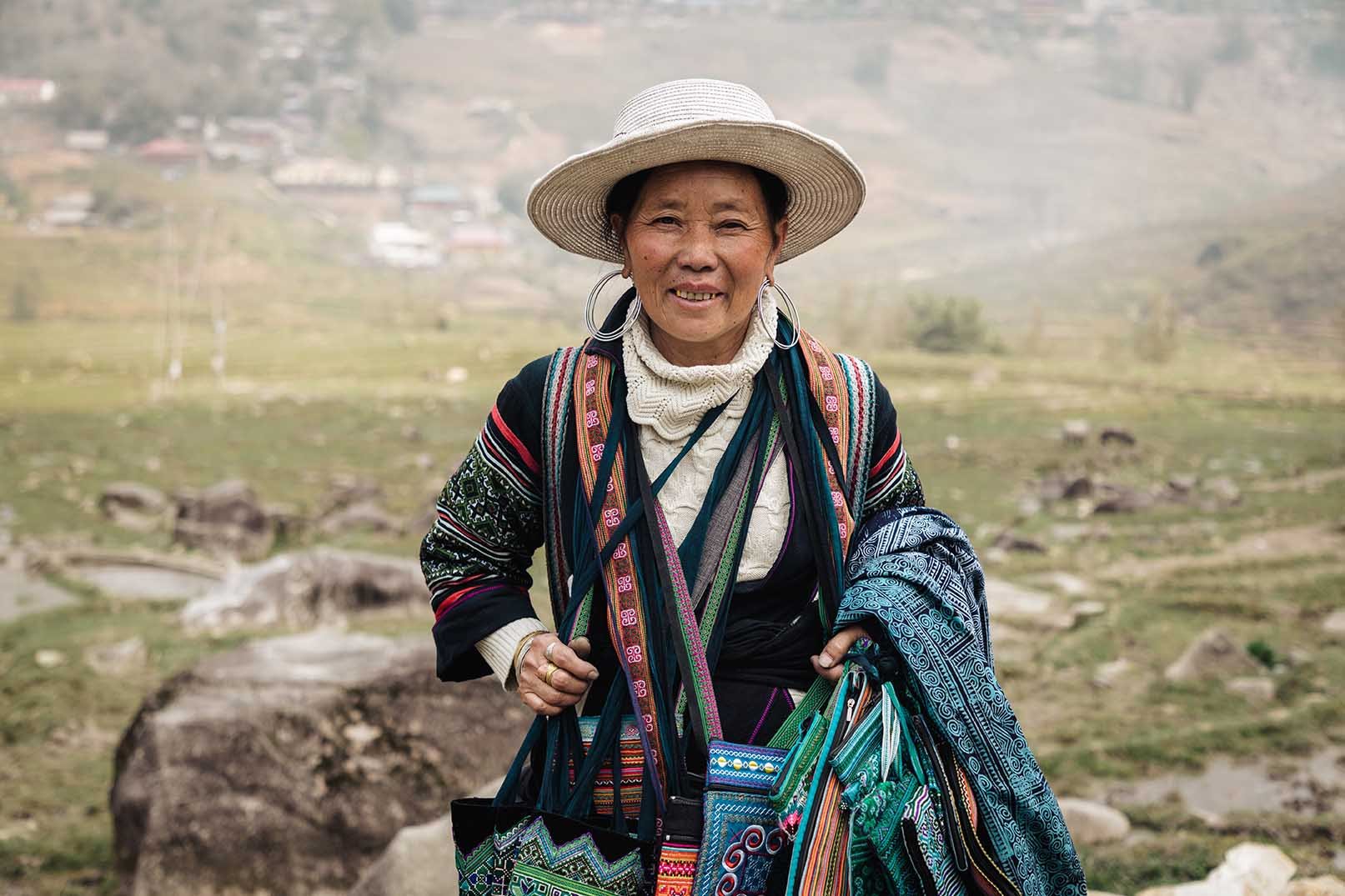Discovering Sapa’s Hidden Villages: Lao Chai and Ta Van
A TOUR THROUGH LAO CHAI AND TA VAN, SAPA
Lao Chai and Ta Van are two villages in Sapa, Vietnam, inhabited by the Hmong and Zay minorities, who differ in language, customs, and dress.
Both are located in the Muong Hoa Valley, nestled between the majestic Hoang Lien Son mountain range and Ham Rong mountain. The area is known for its impressive rice terraces, many of which are over two hundred years old, passed down from generation to generation.
The tour through the villages involves a guided 6 km hike that lasts about 3 hours. The entire path is a downhill route, paved through the stunning rice terraces. No physical preparation is necessary, just a good spirit and reliable walking shoes.
The best part of the tour is the breathtaking scenery, but learning about the region’s culture is also a highlight.
Our guide (from Mundo Asia) made several interesting stops: viewpoints with the best views, visiting an artisan’s home to learn about her life and work, and a local market. Along the way, she shared stories about the area, its history, and the production processes, pointing out important landscape features.
DISCOVERING LAO CHAI
Lao Chai is mainly inhabited by the Hmong, an ethnic group known for their women’s traditional dress, featuring black shorts and unique embroidery.
In Lao Chai, we saw the indigo fabric dyeing process, using a local plant. After harvesting the green leaves, they are crushed to release blue dye and mixed with water in a large tank until the color is fully extracted.
Before dyeing, women create the pattern using bee wax by hand in a fine, delicate style.
The fabric can be cotton, which is more affordable, or a handwoven fabric made from hemp (cannabis sativa), a longer weaving process that explains the higher cost. We saw this process during our Suoi Ho tour.
With the design complete, the piece is then boiled in the indigo tank, where the wax melts, leaving only the pattern. This fabric can become a unique piece or serve as a decorative part for cushions, bags, or table runners, for example.
Hmong women are skilled in weaving, sewing, and embroidery, making their handicrafts beautifully distinctive.
Tip: Many women and girls will follow you, offering products. These items are often cheaper than in Sapa or Hanoi, so focus only on those you are interested in buying. Carry small bills in cash, as many sellers don’t have change.
DISCOVERING TA VAN
Ta Van is more organized to receive tourists. In addition to easy access, there are dozens of guesthouses with the best views of the rice terraces. If you’re hungry or thirsty, stop in Ta Van, where the views are worth the pause.
Here, we could more easily observe the preparation of the land for planting, even walking through a field where the path passes. The whole family participates, including babies, as mothers have no one to leave them with.
We also noticed that buffaloes are gradually being replaced by machinery. A buffalo can cost up to $2,000 and is challenging to care for in low temperatures. Thus, families are now investing in machinery to reduce expenses.
The village entrance has a small market for those coming from Lao Chai, and a bridge for those coming from Sapa. Unlike Lao Chai, there is almost no pressure from vendors.
It’s a place to relax and escape the hustle of Sapa, especially at night!
HOW TO GET THERE
The best way to start the trek is from Lao Chai, ensuring a downhill route. The trailhead is about 7 km from Sapa’s center. You can go on foot, by moto-taxi, taxi, or private car with a guide, as we did.
During our pre-trip research, we read about a 75,000 dong fee, but at the site, we only saw an abandoned booth, and our guide didn’t stop to pay or present tickets. However, it’s wise to carry cash, just in case.
BEST TIME TO VISIT LAO CHAI AND TA VAN IN SAPA
We visited during the land preparation period in March. Planting takes place in April.
The rainy season (June to August) is when the rice fields are lush green. By September, the rice reaches maturity, painting the mountains a golden hue. This is also when the village becomes more vibrant and bustling.
This image was generated by AI
Despite the green splendor, it’s best to avoid the rainy months, especially July and August. Sapa has much to explore, so plan at least a two-night stay.
GOING ON A TRIP? THEN BOOK HERE!
Did you know that when you make a booking using the blog’s link, we receive a small commission? You don’t pay anything extra, you get discounts, and you help the Eduardo and Mônica blog produce complete and quality articles.
Help the blog that helps you!
• Accommodation: Booking.com
• Tours and Tickets: Get Your Guide
• Transport: 12go (Asia, Brazil, Europe, and Australia)
"This post is a translated version of the original content from our website www.eduardo-monica.com"
Veja também nosso site em Português: www.eduardo-monica.com


















